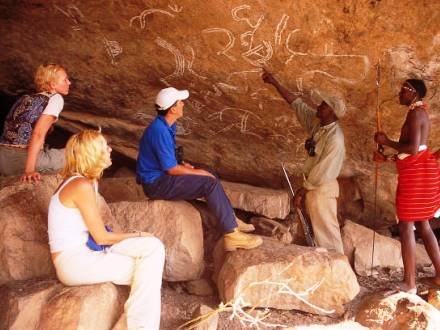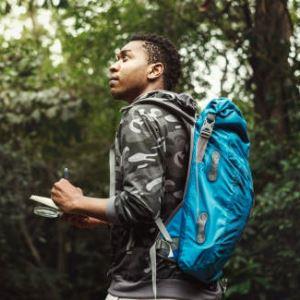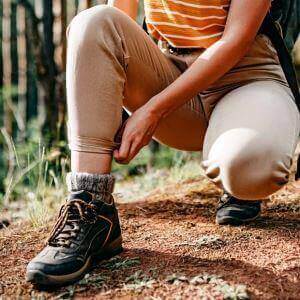 Kenya is a culturally rich destination that continues to capture the hearts of travelers from around the world. For Malaysian tourists, Kenya presents a unique blend of heritage, history, and authentic experiences that are difficult to find elsewhere. The country’s many cultural sites, including traditional villages, historic landmarks, and well-curated museums, make it a rewarding destination for travelers from Malaysia looking to explore African traditions. One of the key attractions for Malaysian tourists is the opportunity to visit cultural villages that offer an immersive look into tribal life. The Maasai Village near the Maasai Mara is particularly popular, where visitors can engage with the Maasai community, observe traditional dances, and learn about age-old customs. Similarly, the Bomas of Kenya in Nairobi offers choreographed cultural performances and exhibits that highlight the country’s ethnic diversity. These experiences allow Malaysian tourists to see, hear, and feel the rhythms of Kenyan life in a deeply personal way. Historic sites also play a significant role in drawing visitors from Malaysia. Fort Jesus in Mombasa is one of the most visited heritage landmarks in the country, a centuries-old Portuguese fort that stands as a testament to Kenya’s colonial past and strategic importance along the Indian Ocean trade routes. The Gede Ruins, hidden in the forests of Kilifi County, intrigue Malaysian tourists with their mysterious aura and the remnants of a once-thriving Swahili civilization. For those who enjoy structured learning and cultural insights, Kenya’s museums are a top choice. The Nairobi National Museum showcases a variety of exhibits that span Kenya’s natural history, ethnography, and contemporary art. The Karen Blixen Museum, located in the former home of the famous Danish author, is a unique stop for literary-minded travelers from Malaysia. Additionally, the Kisumu Museum in western Kenya offers displays of traditional Luo homesteads, which provide a rare opportunity for Malaysian tourists to understand inland cultures. Many travel agencies have taken note of this growing interest, now offering Kenya culture tour packages from Malaysia that bundle these key sites into one seamless and enriching experience. These tour packages often include guided visits to heritage villages, historic forts, and national museums, ensuring that travelers from Malaysia get an in-depth perspective of Kenyan traditions and lifestyles. A typical itinerary might begin with a traditional welcome ceremony in a Maasai village, where visitors can take part in tribal storytelling and dance. The journey might then continue to Fort Jesus in Mombasa, where guides explain the fort’s strategic importance and rich colonial history. The package often concludes with time spent in Nairobi exploring the National Museum and the Karen Blixen Museum, both offering deeper cultural narratives that enrich the entire travel experience. Such curated tours not only provide a stress-free travel option for Malaysian tourists but also create lasting memories through hands-on cultural exchange. Whether it’s witnessing the dance of the Maasai, walking the ancient corridors of Fort Jesus, or exploring the artifacts and art of Nairobi’s top museums, these cultural moments help forge meaningful and lasting connections between Malaysian travelers and Kenya’s diverse heritage.
Kenya is a culturally rich destination that continues to capture the hearts of travelers from around the world. For Malaysian tourists, Kenya presents a unique blend of heritage, history, and authentic experiences that are difficult to find elsewhere. The country’s many cultural sites, including traditional villages, historic landmarks, and well-curated museums, make it a rewarding destination for travelers from Malaysia looking to explore African traditions. One of the key attractions for Malaysian tourists is the opportunity to visit cultural villages that offer an immersive look into tribal life. The Maasai Village near the Maasai Mara is particularly popular, where visitors can engage with the Maasai community, observe traditional dances, and learn about age-old customs. Similarly, the Bomas of Kenya in Nairobi offers choreographed cultural performances and exhibits that highlight the country’s ethnic diversity. These experiences allow Malaysian tourists to see, hear, and feel the rhythms of Kenyan life in a deeply personal way. Historic sites also play a significant role in drawing visitors from Malaysia. Fort Jesus in Mombasa is one of the most visited heritage landmarks in the country, a centuries-old Portuguese fort that stands as a testament to Kenya’s colonial past and strategic importance along the Indian Ocean trade routes. The Gede Ruins, hidden in the forests of Kilifi County, intrigue Malaysian tourists with their mysterious aura and the remnants of a once-thriving Swahili civilization. For those who enjoy structured learning and cultural insights, Kenya’s museums are a top choice. The Nairobi National Museum showcases a variety of exhibits that span Kenya’s natural history, ethnography, and contemporary art. The Karen Blixen Museum, located in the former home of the famous Danish author, is a unique stop for literary-minded travelers from Malaysia. Additionally, the Kisumu Museum in western Kenya offers displays of traditional Luo homesteads, which provide a rare opportunity for Malaysian tourists to understand inland cultures. Many travel agencies have taken note of this growing interest, now offering Kenya culture tour packages from Malaysia that bundle these key sites into one seamless and enriching experience. These tour packages often include guided visits to heritage villages, historic forts, and national museums, ensuring that travelers from Malaysia get an in-depth perspective of Kenyan traditions and lifestyles. A typical itinerary might begin with a traditional welcome ceremony in a Maasai village, where visitors can take part in tribal storytelling and dance. The journey might then continue to Fort Jesus in Mombasa, where guides explain the fort’s strategic importance and rich colonial history. The package often concludes with time spent in Nairobi exploring the National Museum and the Karen Blixen Museum, both offering deeper cultural narratives that enrich the entire travel experience. Such curated tours not only provide a stress-free travel option for Malaysian tourists but also create lasting memories through hands-on cultural exchange. Whether it’s witnessing the dance of the Maasai, walking the ancient corridors of Fort Jesus, or exploring the artifacts and art of Nairobi’s top museums, these cultural moments help forge meaningful and lasting connections between Malaysian travelers and Kenya’s diverse heritage.
Cultural Sites in Kenya Popular With Malaysian Tourists
| Cultural Site | Location | Popular With Malaysians | Experience Type |
|---|---|---|---|
| Maasai Village | Maasai Mara | Yes | Traditional Village Tour |
| Bomas of Kenya | Nairobi | Yes | Cultural Performances |
| Fort Jesus | Mombasa | Yes | Historical Landmark |
| Gede Ruins | Kilifi | Yes | Ancient Swahili Site |
| Nairobi National Museum | Nairobi | Yes | History and Culture |
| Karen Blixen Museum | Nairobi | Yes | Literary Heritage |
| Kisumu Museum | Kisumu | Yes | Ethnographic Exhibits |
Popular Cultural Villages in Kenya That Malaysians Love to Visit
Kenya's cultural villages are among the most enriching experiences for travelers seeking to immerse themselves in authentic traditions. For Malaysian tourists, these villages serve as windows into Kenya's diverse ethnic communities and heritage practices. Each visit offers a vibrant, educational, and often emotional journey into the heart of African culture. Among the most visited cultural villages is the Maasai Village near the Maasai Mara. Nestled within the savannah landscape, the village offers a warm welcome to international guests, including many from Malaysia. Tourists are introduced to the daily life of the Maasai people renowned for their unique attire, elaborate beadwork, and rhythmic chants. From traditional dance performances to storytelling sessions and guided walks through the village, visitors gain firsthand insight into the centuries-old customs of the Maasai. Another highlight is the Bomas of Kenya in Nairobi. This cultural center is particularly popular with Malaysian tourists for its lively stage performances that feature music, dance, and drama from Kenya’s various tribes. The reconstructed traditional homesteads, or "bomas," reflect the architecture and layout of different ethnic groups, giving tourists a tangible sense of tribal lifestyles and regional diversity. Many visitors from Malaysia describe these cultural encounters as deeply meaningful. The level of personal interaction and the authenticity of the experiences stand out. Cultural village visits often end with local meals, giving tourists the chance to sample traditional Kenyan dishes and share in community dining. It’s not just about entertainment or sightseeing these visits foster mutual understanding, appreciation, and sometimes even friendship between the locals and international visitors. Tourists leave with more than photos; they take home stories, lessons, and a sense of connection that bridges continents. Maasai village tours loved by Malaysian tourists have become an essential part of many travel itineraries for good reason. They are not just tours but transformational experiences that highlight the living heritage of Kenya while resonating deeply with Malaysian travelers who value culture and tradition. These tours provide opportunities for travelers to step out of their comfort zones and engage directly with the Maasai people in their own environment. Visitors learn about the Maasai’s unique social structures, spiritual beliefs, and time-honored rituals. Malaysian tourists often express appreciation for the chance to participate in traditional ceremonies, observe age-old crafts like beadwork, and share meals prepared using indigenous methods. These authentic moments encourage a strong cultural connection and foster mutual respect. Beyond the scheduled activities, the conversations and interactions with Maasai hosts often leave a lasting impression. The tours also emphasize sustainability and community empowerment, with many of the proceeds supporting education and healthcare in the villages. These cultural villages continue to be some of the most loved and talked-about experiences among Malaysian visitors to Kenya. They combine education, emotion, and cultural depth in one unforgettable package, leaving travelers enriched, enlightened, and eager to return or share their stories back home.
Which Traditional Kenyan Villages Do Tourists from Malaysia Visit Most?
Malaysian tourists visiting Kenya are consistently drawn to cultural villages that offer authentic and immersive experiences. These traditional settings give visitors the opportunity to interact directly with Kenyan tribes, learn about their heritage, and participate in age-old customs. Among the most popular destinations is the Maasai Village near the Maasai Mara. Malaysian travelers are often captivated by the unique traditions, colorful attire, and communal lifestyle of the Maasai people. The village experience includes singing, dancing, beadwork demonstrations, and storytelling sessions, which allow guests to understand Maasai beliefs, values, and everyday life. Equally appealing is the Bomas of Kenya, located in Nairobi. This cultural center features reconstructed traditional homes from various Kenyan ethnic groups, such as the Kikuyu, Luhya, Kalenjin, and others. It also hosts live performances that showcase indigenous music and dance. Malaysian tourists appreciate the dynamic and educational environment, where they can see the diversity of Kenya's cultural tapestry in one location. Other notable village experiences include the Samburu and Turkana villages, which offer a glimpse into northern Kenya's semi-nomadic cultures. These communities live in arid and remote regions, maintaining traditional lifestyles that have remained largely untouched by modern influences. Malaysian tourists visiting these villages often express fascination with the colorful clothing, jewelry, and body art that define both the Samburu and Turkana identities. These cultural markers, along with the warm hospitality of the communities, provide a truly immersive experience. Visitors from Malaysia have the opportunity to engage with tribal elders, witness traditional rituals, and learn about survival techniques in some of Kenya's harshest environments. These moments, often facilitated by local guides or cultural ambassadors, help bridge the gap between different worldviews and offer deep cultural insights. The sincerity and openness with which the Samburu and Turkana people share their stories create a profound emotional connection with tourists. For Malaysian visitors seeking a deeper cultural understanding, these village visits are unforgettable highlights that offer both educational value and emotional resonance. They foster respect for indigenous knowledge systems and traditions, while also challenging stereotypes and broadening global perspectives. These enriching encounters are often shared and remembered long after the journey concludes.
Top Historic Landmarks in Kenya That Attract Malaysian Tourists
 Kenya’s historic landmarks are windows into the country's deep and diverse past, and they hold special interest for Malaysian tourists. These sites tell stories of ancient civilizations, colonial encounters, trade routes, and spiritual traditions that continue to shape the nation's identity. Malaysian visitors are especially intrigued by how Kenya’s history intertwines with its cultural diversity, creating experiences that are both educational and visually captivating. One of the most iconic landmarks is Fort Jesus in Mombasa. Built by the Portuguese in the late 16th century, this UNESCO World Heritage Site is a monument to maritime history and the struggle for control of the East African coast. Malaysian tourists often spend hours exploring its well-preserved ramparts, dungeons, and museum exhibits. The fort offers not only historical insights but also panoramic views of the Indian Ocean, making it a must-visit. Equally fascinating is the Gede Ruins, located in the coastal region of Kilifi County. These remains of a 13th-century Swahili town are enveloped in lush forest and mystery. Malaysian visitors are captivated by the architecture and the sense of an ancient world preserved in stone. Guided tours provide context about the once-thriving Islamic community that inhabited the area. Nairobi also features prominently in historic itineraries. The August 7th Memorial Park, built to commemorate the victims of the 1998 U.S. Embassy bombing, resonates with visitors who appreciate Kenya’s more recent history. The Railway Museum offers another layer of the colonial narrative, showcasing the impact of British infrastructure projects on the region’s growth. For those seeking a religious or spiritual connection, the All Saints Cathedral in Nairobi is a key landmark. Its gothic-style architecture and poignant historical role during the independence era make it a meaningful stop. In western Kenya, the Kisumu Impala Sanctuary contains historic structures and monuments tied to the region’s cultural heritage. These landmarks offer more than just photo opportunities they are educational gateways into Kenya’s past. From coastal forts to ancient mosques and memorials, each site holds stories that resonate across cultures. Travel agencies have begun designing customized heritage tours that incorporate these attractions, recognizing their appeal to Malaysian travelers. With so much to see and learn, it’s no surprise that these popular historic landmarks in Kenya for Malaysian visitors are growing in recognition and demand. These sites not only offer visually striking architecture and fascinating historical narratives but also provide deeply personal and reflective experiences. They create opportunities for Malaysian tourists to understand how Kenya's past has shaped its present, drawing parallels with their own history and heritage. As more Malaysian travelers seek meaningful and educational tourism, historic landmarks become essential stops on their itineraries. Fort Jesus offers lessons in maritime history and colonial conflict, while the Gede Ruins invite contemplation about urban life and spiritual beliefs in ancient times. Nairobi’s memorials and museums introduce visitors to pivotal moments in Kenya’s more recent political journey. These experiences go beyond the surface, connecting travelers with Kenya’s soul. They provide context, foster emotional bonds, and instill a sense of respect for the struggles and triumphs of a nation. Through these cultural exchanges, Malaysian tourists gain not only knowledge but also a renewed appreciation for resilience, identity, and heritage. Kenya’s historic landmarks continue to captivate and inspire, ensuring they remain a treasured part of every Malaysian visitor’s journey.
Kenya’s historic landmarks are windows into the country's deep and diverse past, and they hold special interest for Malaysian tourists. These sites tell stories of ancient civilizations, colonial encounters, trade routes, and spiritual traditions that continue to shape the nation's identity. Malaysian visitors are especially intrigued by how Kenya’s history intertwines with its cultural diversity, creating experiences that are both educational and visually captivating. One of the most iconic landmarks is Fort Jesus in Mombasa. Built by the Portuguese in the late 16th century, this UNESCO World Heritage Site is a monument to maritime history and the struggle for control of the East African coast. Malaysian tourists often spend hours exploring its well-preserved ramparts, dungeons, and museum exhibits. The fort offers not only historical insights but also panoramic views of the Indian Ocean, making it a must-visit. Equally fascinating is the Gede Ruins, located in the coastal region of Kilifi County. These remains of a 13th-century Swahili town are enveloped in lush forest and mystery. Malaysian visitors are captivated by the architecture and the sense of an ancient world preserved in stone. Guided tours provide context about the once-thriving Islamic community that inhabited the area. Nairobi also features prominently in historic itineraries. The August 7th Memorial Park, built to commemorate the victims of the 1998 U.S. Embassy bombing, resonates with visitors who appreciate Kenya’s more recent history. The Railway Museum offers another layer of the colonial narrative, showcasing the impact of British infrastructure projects on the region’s growth. For those seeking a religious or spiritual connection, the All Saints Cathedral in Nairobi is a key landmark. Its gothic-style architecture and poignant historical role during the independence era make it a meaningful stop. In western Kenya, the Kisumu Impala Sanctuary contains historic structures and monuments tied to the region’s cultural heritage. These landmarks offer more than just photo opportunities they are educational gateways into Kenya’s past. From coastal forts to ancient mosques and memorials, each site holds stories that resonate across cultures. Travel agencies have begun designing customized heritage tours that incorporate these attractions, recognizing their appeal to Malaysian travelers. With so much to see and learn, it’s no surprise that these popular historic landmarks in Kenya for Malaysian visitors are growing in recognition and demand. These sites not only offer visually striking architecture and fascinating historical narratives but also provide deeply personal and reflective experiences. They create opportunities for Malaysian tourists to understand how Kenya's past has shaped its present, drawing parallels with their own history and heritage. As more Malaysian travelers seek meaningful and educational tourism, historic landmarks become essential stops on their itineraries. Fort Jesus offers lessons in maritime history and colonial conflict, while the Gede Ruins invite contemplation about urban life and spiritual beliefs in ancient times. Nairobi’s memorials and museums introduce visitors to pivotal moments in Kenya’s more recent political journey. These experiences go beyond the surface, connecting travelers with Kenya’s soul. They provide context, foster emotional bonds, and instill a sense of respect for the struggles and triumphs of a nation. Through these cultural exchanges, Malaysian tourists gain not only knowledge but also a renewed appreciation for resilience, identity, and heritage. Kenya’s historic landmarks continue to captivate and inspire, ensuring they remain a treasured part of every Malaysian visitor’s journey.
What Are Kenya's Best Historical Sites for Tourists from Malaysia?
Kenya is home to many fascinating historical landmarks that attract travelers from all over the world. For Malaysian tourists, the country's rich blend of colonial history, ancient settlements, and cultural depth creates a compelling reason to explore these treasured sites. From coastal forts to forest-enshrouded ruins and iconic city memorials, each site offers a unique story and a window into Kenya’s past. Here are some of the best historical sites in Kenya that appeal to visitors from Malaysia:
- Fort Jesus, Mombasa: Fort Jesus is a 16th-century Portuguese fort and a UNESCO World Heritage Site located in Mombasa. It showcases impressive architecture and played a crucial role in guarding the East African coast during periods of European colonization and trade. Malaysian tourists enjoy walking along the ancient walls, visiting the museum within the fort, and learning about the cultural conflicts that once shaped the region. The view of the Indian Ocean from the fort’s high walls also adds to its appeal, making it a perfect blend of history and scenic beauty.
- Gede Ruins, Kilifi County: Hidden within a coastal forest, the Gede Ruins are the remains of a Swahili town that flourished between the 13th and 17th centuries. The site includes mosques, houses, and tombs made of coral stone, surrounded by baobab trees and monkeys that roam freely. Malaysian tourists are fascinated by the site’s mystery and serenity. Guided tours provide historical insights into trade, architecture, and Islamic influence in early East African communities, giving Malaysian visitors a deep appreciation of Kenya’s multicultural past.
- August 7th Memorial Park, Nairobi: This park honors the lives lost during the 1998 bombing of the U.S. Embassy in Nairobi. For Malaysian tourists, the site offers a place of reflection and understanding of Kenya’s more recent history. The memorial garden, museum, and exhibits tell personal stories of loss, resilience, and national healing. It’s a reminder of Kenya’s endurance and growth, making it a meaningful stop for those seeking emotional and historical context during their travels.
- Railway Museum, Nairobi: Located near Nairobi Railway Station, this museum chronicles the story of the Kenya-Uganda Railway, a pivotal infrastructure project from the British colonial era. It features vintage locomotives, artifacts, and stories of the builders who made it all possible. Malaysian tourists appreciate the museum’s storytelling approach, which makes history tangible and engaging.
These popular historic landmarks offer more than just visual interest they foster reflection, learning, and cross-cultural appreciation, making them essential stops on any heritage-focused itinerary.
Best Kenyan Museums and Cultural Centers for Visitors from Malaysia to Explore
Museums and cultural centers in Kenya are vital in preserving and showcasing the country's diverse heritage. For Malaysian tourists, these venues offer a deep dive into Kenya's history, traditions, and artistic expressions, making them an integral part of any cultural itinerary. From major national institutions to regionally focused museums, each site presents unique perspectives that resonate with visitors from Malaysia. One of the top stops is the Nairobi National Museum. Located in the capital, it houses extensive exhibits on Kenya’s natural history, archaeology, art, and ethnography. Malaysian tourists particularly enjoy the Hall of Kenya, where they can learn about the country’s 44 ethnic groups, traditional lifestyles, and indigenous practices. The museum also includes botanical gardens and a snake park, offering a broader educational experience. Another favorite is the Karen Blixen Museum, the former home of the "Out of Africa" author. Set in a serene environment, this museum allows visitors to step back in time and understand colonial-era Kenya from a literary and historical lens. Malaysian travelers appreciate its storytelling quality and the beautifully preserved artifacts from Blixen’s life. For a different cultural view, the Kisumu Museum in western Kenya provides insights into the Luo community. Traditional homestead replicas and ethnographic collections make it easy for Malaysian visitors to grasp the day-to-day life of the Luo people. Exhibits also include regional wildlife and fishing tools, which help tell the story of local economies and beliefs. Other notable cultural centers include the Nairobi Gallery and the Kenya National Archives. These institutions showcase contemporary art, photographs, and archival material that reflect Kenya’s political and social history. Malaysian tourists often find these locations compelling for their connection to Kenya’s national identity. These institutions offer more than exhibits; they serve as vibrant platforms for learning and cross-cultural understanding. They provide Malaysian travelers with a comprehensive and interactive way to engage with Kenya’s past and present, going far beyond passive observation. Whether it’s through guided tours, participatory exhibits, or cultural performances, these museums and centers offer engaging formats that resonate with international visitors. Kenyan cultural places loved by Malaysian tourists are not just places to visit they are spaces to reflect, connect, and learn. Malaysian tourists often comment on how these experiences deepen their understanding of Kenya’s ethnic diversity, colonial history, and evolving cultural identity. Viewing traditional costumes, studying tribal tools, or attending curated workshops on art and heritage gives them new perspectives and fosters mutual appreciation. The interactive elements also allow for storytelling exchanges and dialogue with Kenyan guides and artists, creating memorable encounters. These visits leave a lasting impression by emphasizing the shared values of community, history, and tradition. In many ways, they act as cultural bridges, helping Malaysian tourists relate more closely to Kenyan people and their stories. As a result, the memories made in these museums are often cherished and shared long after the journey ends.
Which Museums in Kenya Are Popular With Malaysian Travelers?
Kenya's museums are more than just repositories of history they are vibrant storytelling spaces that attract culturally curious visitors from around the world, including Malaysia. Malaysian tourists, in particular, find Kenya’s museums and cultural centers appealing for their ability to bring to life the stories of Kenya's people, traditions, and milestones. The Nairobi National Museum is a popular starting point. It offers a comprehensive overview of Kenya’s natural, historical, and cultural heritage. Malaysian visitors enjoy the diversity of exhibits, including ethnographic collections, paleontological displays, and contemporary Kenyan art. The Hall of Kenya is especially engaging, offering insights into the customs and lifestyles of Kenya’s 44 ethnic communities. The Karen Blixen Museum in Nairobi also holds a unique charm. Housed in the actual residence of the famed Danish author, it offers a glimpse into colonial Kenya and the personal life of one of its most storied residents. Literary enthusiasts from Malaysia appreciate the authenticity of the home and the preserved artifacts that narrate Blixen's time in Africa. The Kisumu Museum in western Kenya presents an intimate portrait of the Luo community through traditional homestead replicas and everyday cultural objects. Malaysian tourists are drawn to these hands-on experiences that deepen understanding of inland communities. Other noteworthy institutions include the Nairobi Gallery and the Kenya National Archives, both of which present artistic and documentary insights into Kenya’s past and present. These spaces often host rotating exhibitions, adding a dynamic layer to each visit. These museums are some of the most famous cultural sites in Kenya visited by Malaysians. They provide more than just facts and artifacts; they tell Kenya's story in a way that resonates emotionally and intellectually with visitors. For many Malaysian travelers, these museums are where Kenya comes alive through guided storytelling, preserved artifacts, and curated exhibits that showcase the depth of the country's heritage. What makes these museums stand out is their ability to bridge cultures. Malaysian tourists often find unexpected connections between Kenyan traditions and their own, whether it's in the shared values of community, respect for elders, or traditional craftsmanship. These experiences foster mutual appreciation and cultural exchange. Many museums also provide hands-on or interactive exhibits, such as music, dance, or workshops, allowing visitors to actively participate in the culture rather than passively observe. This immersive element transforms the museum visit into a memorable learning experience. These cultural encounters stay with Malaysian tourists long after their journey ends. The museums serve as places of education, inspiration, and connection, turning each visit into a chapter in their personal travel story. They leave Kenya not only with souvenirs and photos but with a deeper understanding and respect for its people and traditions.
FAQs About Cultural Tours in Kenya for Tourists from Malaysia
Kenya's rich cultural landscape continues to attract curious and adventurous Malaysian tourists. Whether it’s exploring ancient Swahili towns, visiting traditional villages, or immersing in indigenous music and dance, cultural tours offer travelers from Malaysia an unforgettable journey. These tours are ideal for those interested in authentic, interactive experiences that go beyond typical sightseeing. Here's a guide addressing some of the most common questions Malaysian tourists ask when planning a cultural tour in Kenya.
- What Are the Best Times for Cultural Travel in Kenya? The best times to visit Kenya for cultural tours are during the dry seasons, which fall between January to March and July to October. During these months, roads are more accessible, village visits are uninterrupted by rain, and cultural festivals are often held. Malaysian travelers will enjoy sunny days perfect for photography, nature walks, and open-air performances.
- Do I Need a Guide for Visiting Cultural Sites in Kenya? Yes, a local guide is highly recommended. Guides offer language support, cultural interpretation, and access to communities that may not be open to unguided visitors. For Malaysian tourists, having a guide adds meaning to the experience and ensures respectful interaction with local traditions.
- Are Cultural Tours in Kenya Suitable for Families with Kids? Absolutely. Many cultural villages and museums offer child-friendly programs including music, storytelling, and craft-making sessions. Malaysian families will find that these hands-on activities help children learn while having fun, making the entire trip more engaging.
- What Should I Wear When Visiting Villages or Cultural Centers? Dress modestly and comfortably. Lightweight clothing, covered shoulders, and comfortable shoes are advised. For Malaysian tourists, cultural sensitivity is key modest attire shows respect and is often appreciated in rural communities and sacred sites.
- Are Meals Included in Cultural Tour Packages? Many cultural tours include traditional meals as part of the experience. Malaysian tourists often enjoy sampling dishes like ugali, nyama choma, and sukuma wiki. It’s also a chance to dine with host families and learn more about Kenyan culinary customs.
- Is It Safe for Malaysians to Join Cultural Tours in Kenya? Yes, Kenya is generally safe for tourists, especially in guided settings. Reputable tour companies prioritize safety and work closely with local communities. Malaysian visitors are advised to follow common travel safety practices, such as securing valuables and following guide instructions.
Cultural tours in Kenya are deeply enriching experiences that go far beyond ordinary travel. For Malaysian tourists, they offer the chance to witness diverse traditions, engage with local communities, and learn through direct participation. From dancing with the Maasai to exploring historic forts and sampling regional cuisines, these tours leave a lasting impact. Malaysia and Kenya, though geographically distant, share a love for tradition, community, and storytelling. Cultural tours serve as bridges between the two cultures, fostering understanding and friendship. With proper planning and an open heart, Malaysian travelers can expect unforgettable memories, deeper insights, and meaningful connections during their cultural journey through Kenya.



